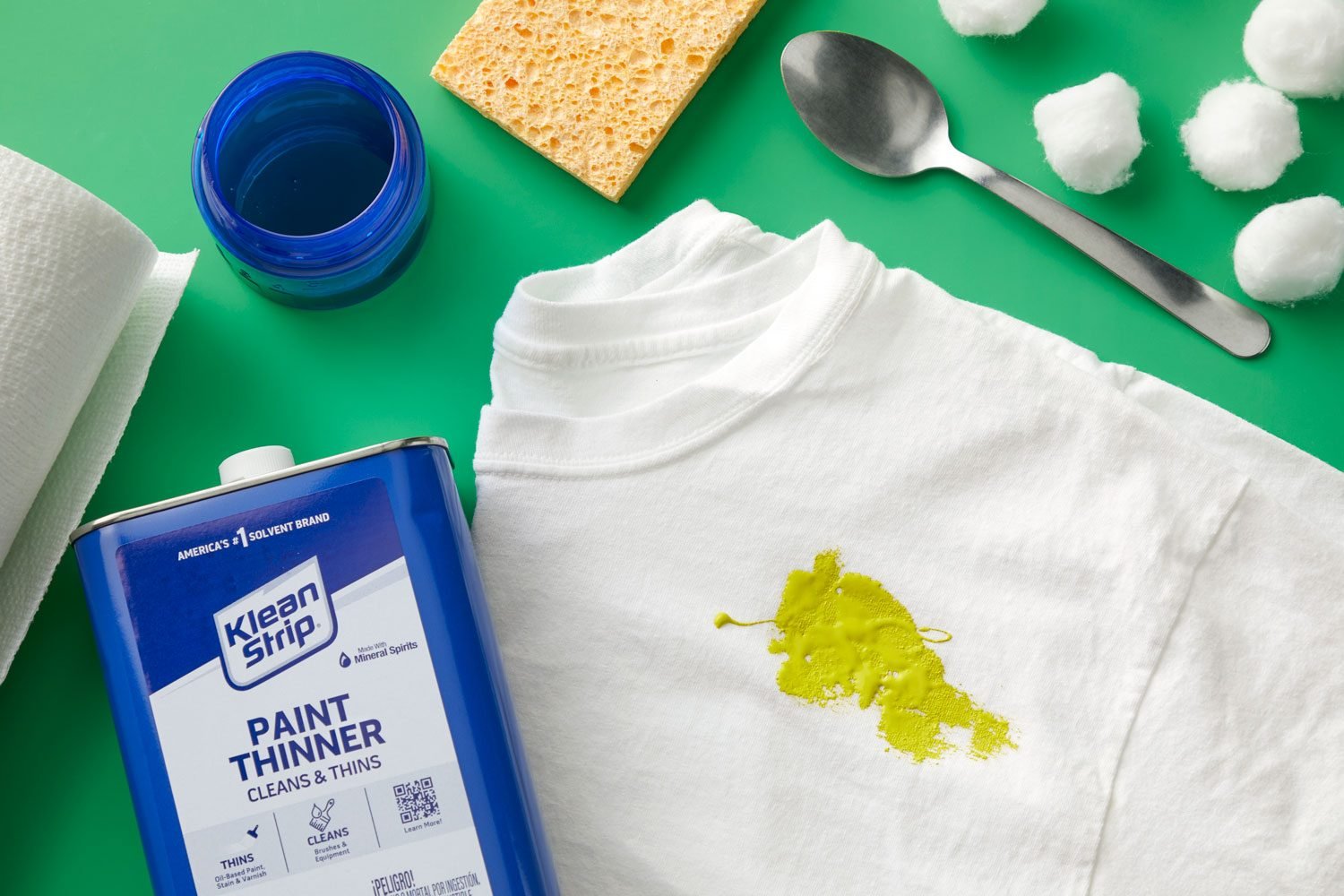How to get washable paint out of clothes? Accidental spills or stains from washable paint on clothing can be frustrating. However, with the right approach and a little patience, it is possible to remove washable paint from clothes effectively. The key is to act quickly and use appropriate methods to prevent the paint from setting. In this comprehensive guide, we will walk you through a step-by-step process for removing washable paint from clothes. From pre-treating to laundering, these techniques will help you restore your clothes to their original condition. Let’s dive into the world of paint stain removal and rescue your garments.

Act Quickly:
When a paint spill occurs, it is crucial to act quickly to prevent the paint garage from drying and setting into the fabric. The sooner you begin the removal process, the better the chances of successfully removing the paint. Gather the necessary materials and start the stain removal process promptly.
Pre-Treat the Stain:
Before attempting to remove the paint, perform a spot test on an inconspicuous area of the garment to ensure it will not be damaged by the cleaning method. Once confirmed, follow these steps to pre-treat the stain:
- Scrape Off Excess: Carefully scrape off any excess paint from the surface of the fabric using a dull knife, spoon, or paper towel. Be gentle to avoid spreading the paint further.
- Flush with Water: Rinse the stained area under cold running water from the backside of the fabric. This will help remove as much paint as possible.
- Apply Dish Soap: Apply a small amount of liquid dish soap directly to the stain. Gently rub the soap into the fabric using your fingers or a soft brush. Allow the soap to sit for a few minutes to penetrate the paint.
Rinse and Repeat:
After pre-treating the stain, rinse the garment thoroughly with cold water to remove the soap and loosened paint. Repeat the pre-treatment process if any traces of the paint remain on the fabric. For stubborn paint stains, consider employing additional stain removal techniques.

Use Stain Removal Products:
If the pre-treatment process does not completely remove the paint, try one of the following stain removal products:
- Rubbing Alcohol: Moisten a cloth or cotton ball with rubbing alcohol. Blot the paint stain gently, working from the outside towards the center to prevent spreading. Rinse the fabric thoroughly after treating with alcohol.
- Nail Polish Remover: Dampen a cloth or cotton ball with nail polish remover containing acetone. Apply the remover to the stain and gently rub the area. Rinse the fabric well with cold water.
- Hairspray: Spray a small amount of hairspray directly onto the paint stain. Blot the stain gently with a clean cloth or sponge. Repeat the process until the paint is lifted. Rinse the garment thoroughly afterwards.
Launder the Garment:
Once the paint stain has been successfully removed or significantly diminished, launder the garment as usual using the following steps:
- Inspect the Stain: Before tossing the garment into the washing machine, double-check the stain to ensure it has been removed. If any remnants of paint interior remain, repeat the stain removal process or consider seeking professional help.
- Choose the Right Detergent: Select a detergent suitable for the fabric and follow the recommended usage instructions. Avoid using bleach or harsh chemicals unless specifically recommended by the garment care instructions.
- Wash in Cold Water: Wash the garment in cold water to prevent further setting of any residual paint. Check the care label for specific washing instructions.
Evaluate and Repeat if Necessary:
Inspect the garment after washing and air-drying to ensure the paint stain has been completely removed. If any traces of paint remain, repeat the stain removal process or consider professional cleaning.

Precautions for washing paint out of clothes
Accidental paint stains on clothes can be frustrating, but with the right techniques and precautions, it is possible to successfully remove them. When attempting to remove paint from clothes, it’s important to exercise caution to avoid damaging the fabric or spreading the stain further.
Act Quickly:
Timing plays a crucial role in successfully removing paint stains from clothes. It is important to act promptly to prevent the paint from drying and setting further into the fabric. The longer the paint stays on the fabric, the harder it becomes to remove. As soon as you notice a paint stain, gather the necessary tools and materials for removal and start the process immediately.
Identify the Paint Type:
Before attempting to remove the paint, it is essential to identify the type of paint on the fabric. This information will help determine the appropriate removal method. Different types of paint, such as water-based, oil-based, or acrylic, may require different approaches for effective cleaning. Check the paint can or consult a professional to identify the type of paint finish used.
Pre-test on an Inconspicuous Area:
To avoid damaging the fabric, always perform a patch test in an inconspicuous area of the garment before applying any stain removal method. Apply a small amount of the chosen cleaning solution or treatment to ensure it does not cause discoloration, fabric weakening, or any adverse reactions.

Work from the Outside In:
When treating a paint stain, it is crucial to work from the outer edges of the stain towards the center. This prevents the paint from spreading further into the fabric. Blot or dab at the stain gently, using a clean cloth or sponge, and avoid rubbing vigorously, as this may worsen the stain or push it deeper into the fabric.
Use Gentle Blotting Motions:
When applying a cleaning solution or treatment to a paint stain, use gentle blotting motions rather than rubbing forcefully. Blotting helps lift the paint particles off the fabric without spreading them. Patience and a light touch will yield better results and minimize the risk of damage.
Avoid Heat:
Avoid using heat during the paint stain removal process, as heat can cause the paint to set further into the fabric. This applies to both the pre-treatment stage and the washing stage. Use cold or lukewarm water when rinsing or laundering the stained garment, and refrain from using hot water or applying heat sources like irons or dryers until the stain is fully removed.
Use Appropriate Tools and Materials:
Select the right tools and materials for paint stain removal to prevent additional damage to the fabric. Avoid using harsh chemicals, wire brushes, or abrasive materials that can cause fabric abrasion or tearing. Instead, use gentle cleaning solutions, soft cloths, sponges, or brushes specifically designed for stain removal.

Conclusion:
Removing washable paint stains from clothes requires immediate action and the right techniques. By acting quickly, pre-treating the stain, and using suitable stain removal methods, you can successfully remove paint from your garments. Remember to perform a spot test before applying any cleaning substances and to be patient during the stain removal process. With persistence and care, you can rescue your clothes from unwanted paint stains and restore them to their original condition.
